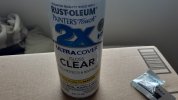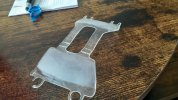Thereal9thdoctor
Well-Known Member
- Joined
- Jun 27, 2021
- Messages
- 571
So I got this kit from a friend at work who has had it for almost 20 years and never built it. Not really a car guy but what the heck. SO...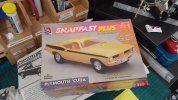
The kit.

The finished chassis, graciously painted by my GF yesterday while I finished working on the vinyl Brundlefly kit.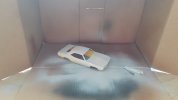
The body in process of priming. It was cast in yellow but I dunno if it'd look any good with just gloss slapped on bare plastic so decided to do it right.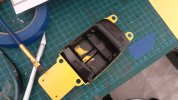
And the interior with base coat, which may just be final coat. The seats will go in after I detail paint.
I also have to scratchbuilt a gearshift since it was lost before getting to me. It won't look like the kit part, but hopefully will suffice.

The kit.

The finished chassis, graciously painted by my GF yesterday while I finished working on the vinyl Brundlefly kit.

The body in process of priming. It was cast in yellow but I dunno if it'd look any good with just gloss slapped on bare plastic so decided to do it right.

And the interior with base coat, which may just be final coat. The seats will go in after I detail paint.
I also have to scratchbuilt a gearshift since it was lost before getting to me. It won't look like the kit part, but hopefully will suffice.

